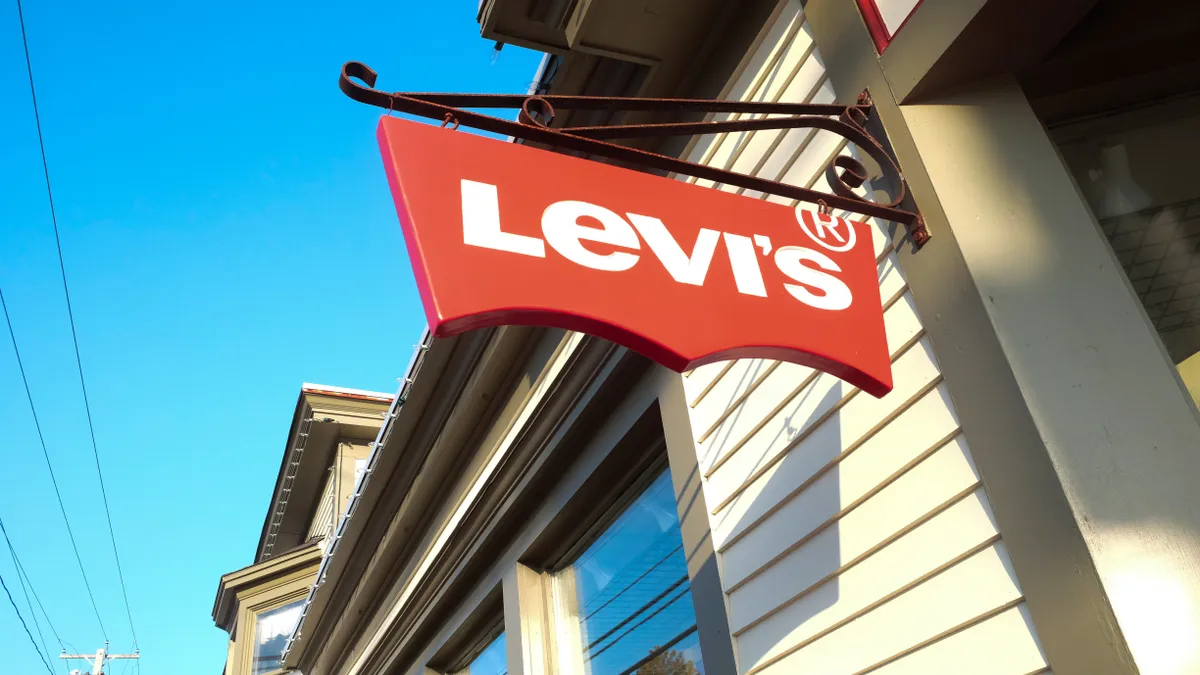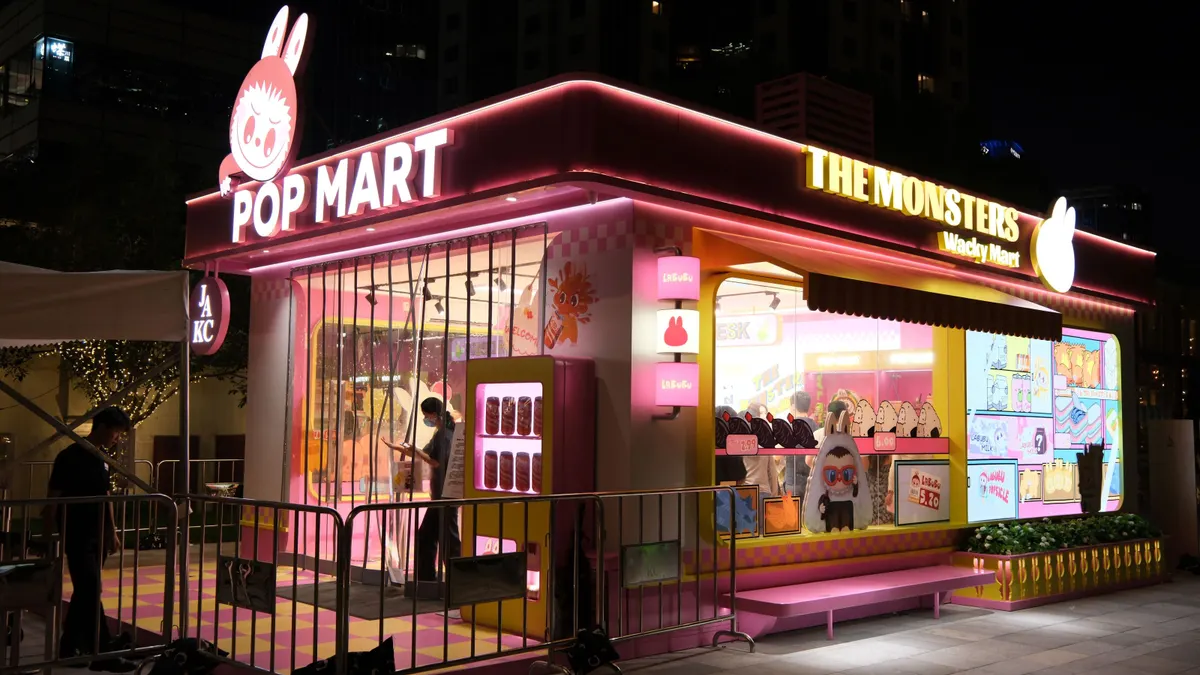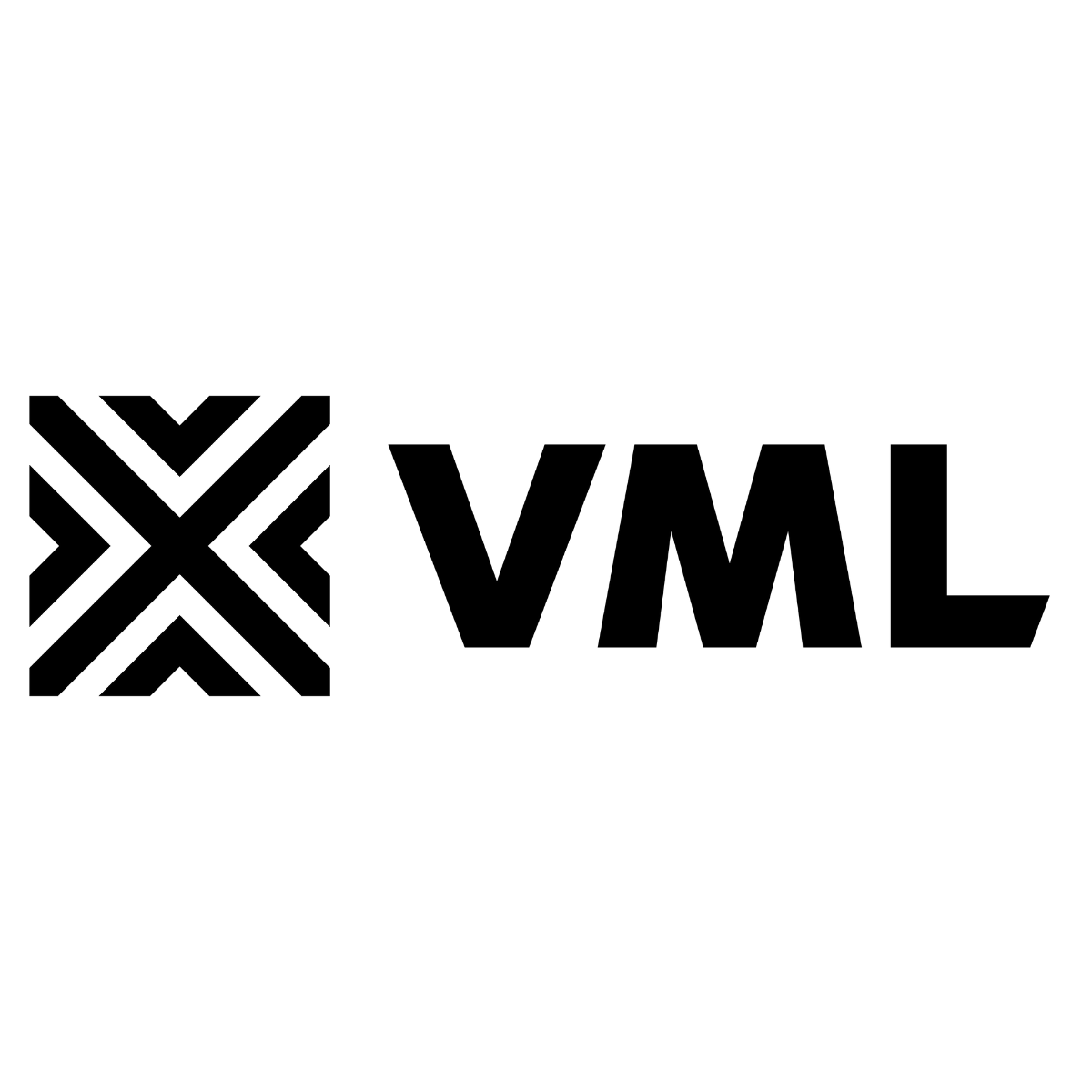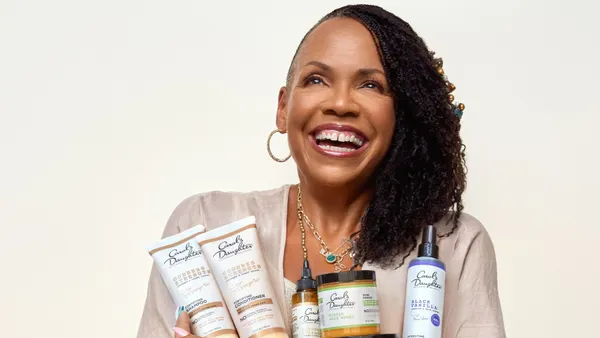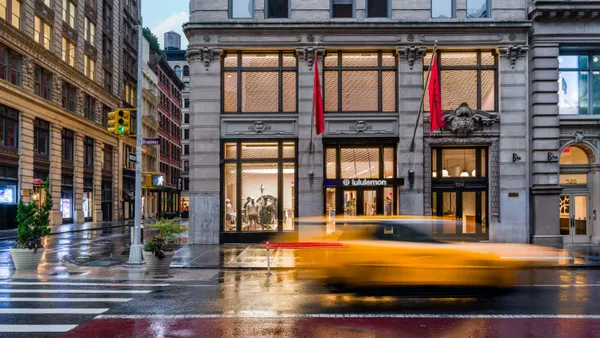Dive Brief:
- Levi Strauss & Co. Q3 net sales rose 7% year over year to $1.5 billion. Beyond Yoga, up 2.5%, provided $33 million of that; Levi’s rose 7%.
- Gross margin expanded by 110 basis points to 61.7%, offset by tariffs. Total inventories rose 12% on a dollar basis. Net income from continuing operations (minus the Dockers business, which has been sold) was more than five times higher than the year-ago period, reaching $122 million.
- The company could double its store count in the U.S., CEO Michelle Gass told analysts Thursday. Levi’s runs nearly 460 stores in the Americas, according to its most recent annual report. Once Beyond Yoga opens four stores in Boston, Houston and Northern California in Q4, its store count will be 14, executives said.
Dive Insight:
Levi’s had a good quarter, with strength across brands, channels, categories and regions, thanks in part to denim’s global popularity.
“As the definitive market leader, we are very well positioned to take advantage of that,” Gass said, noting that Levi’s leads in market share in the U.S. and worldwide, in both men’s and women’s. “And of course, as the leader, we help fuel the growth, and we're seeing that happen.”
The company’s direct-to-consumer sales rose 11%, and wholesale rose 3%. Net revenue rose 6% in the Americas, 5% in Europe and 12% in Asia. Sales of women’s apparel rose 9%, with men's up 5%. Tops rose 9% and bottoms rose 6%.
The brand’s longevity is an asset at the moment, according to Gass.
“When you think about the Levi's brand, in times of uncertainty, consumers turn to brands that they know and trust and Levi's is certainly one of those brands,” she said. “So we're optimistic as we enter the fourth quarter. We expect the health and the momentum of our business to continue.”
If Levi’s expands its store footprint it may have work to do, however, according to Third Bridge analyst Natasha Nair.
“Levi’s retail execution needs attention,” she said in emailed comments. “Our experts describe the company as a wholesaler doing retail, with store experiences that lack the dynamism seen in rivals such as American Eagle or Zara, who refresh assortments weekly.”
Several other analysts noted that the company projected a conservative outlook for Q4, in part because last year had an extra week that boosted revenue by four points and gross margin by 20 basis points. But executives also expect tariffs to take a bite out of gross margin and are concerned about consumer demand.
Wells Fargo analysts led by Ike Boruchow also warned in a Thursday client note that the company continues to struggle to contain expenses. Selling, general and administrative expenses rose nearly 7% to $776 million in the third quarter, per the company’s release.
Boruchow called out executive compensation and expenses related to Levi’s direct-to-consumer transition. Levi’s executives characterize these as “transitory,” he noted.
“The concern is that [Levi’s] has struggled to show an ability to scale expenses for 3-5 years now, thus creating lower levels of visibility into 2026 margin,” he said. “That said, [the company] believes they will lever expenses next FY.”



